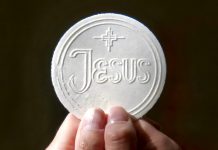The Catholic Church believes and declares that the Blessed Virgin was Immaculate. Yet for many, the very thought of immaculate conception is a baffling question. Nowhere in the Scripture do we come across any reference about the immaculate conception of Mary. But in extracanonical writings dating back to the second century, there are indications of a widely held belief that Mary was immaculate. Saints like Augustine and Ephraim, as also many of the early Church Fathers believed in the immaculate conception of Mary. Starting from Syria in the seventh century, through eighth century Ireland and eleventh century England, the belief in immaculate conception spread to almost all parts of the Universal Church by the seventeenth century.
On the other hand, many theologians and saints were skeptical about the concept of immaculate conception. Bernard of Clairvoux and Thomas Aquinas belonged to this school of thought. Their reasoning was simple. If Mary was free from original sin, there was no need for redemption. Then Jesus Christ’s mission on earth was superfluous. It was Duns Scotus who gave a logical reply to their doubts. According to him, immaculate conception was the most noble example of redemption. In other words, if the reason for the salvation of any other person is the merits of Jesus Christ, the reason for Mary’s immaculate conception was also the merits of Jesus Christ.
Doubts arise when we say that only one person among those billions that lived on earth was born without original sin. Eadmer, the famous English historian, theologian and ecclesiastic gave a simple reply. ‘Potuit, decuit, fecit.’ Translated into English, it reads: ‘It was possible (for God), it was fitting, therefore it was done’. Should we think more about it?
In 1830, it was revealed to Catherine Laboure in France that the Mother of God was immaculate. In 1854, Pope Pius IX declared the immaculate conception of Mary as a dogma through his decree ‘Ineffabilis Deus’. With this proclamation, the position of the Catholic Church regarding this contentious issue was finally clarified. One interesting fact related to this important declaration from the Vatican was that the Pope had consulted all the bishops to ascertain their views in this regard. Almost 90% of the bishops held the view that Mary was immaculate and supported the move to declare it as a dogma of the Church. This is ample evidence for the esteem with which churches and denominations across the globe regarded the immaculate conception of the Mother of God.
Yet there can be some others with doubts still remaining in their minds. And we should not be surprised by it. It is impossible for those who fall prey to the volley of false teachings that the ‘serpent pours from his mouth like a river to sweep her away with the flood’ (Rev 12:15) to grasp the mystery of Mary’s immaculate conception. Perhaps Paul the Apostle had such people also in his mind when he wrote these lines. ‘Those who are unspiritual do not receive the gifts of God’s Spirit, for they are foolishness to them, and they are unable to understand them because they are spiritually discerned’ (1 Cori 2:14)
To a worldly man the doubt is, ‘how can this be?’ We can give them a humble reply only. ‘Nothing is impossible with God’. The Catechism of the Catholic Church teaches: ‘Mary benefited first of all and uniquely from Christ’s victory over sin: she was preserved from all stains of original sin and by a special grace of God committed no sin of any kind during her whole earthly life (CCC 411). The Church goes on to teach that the efforts of the serpent to drag Mary into sin met with failure. “He pursued the woman” but had no hold on her: the new Eve, “full of grace” of the Holy Spirit, is preserved from sin and the corruption of death (CCC 2853).
It was their sin that cost Adam and Eve their life. They in turn transmitted this sin to future generations. The Church teaches that this inclination towards evil that we call original sin is being ‘transmitted with human nature, by propagation, not by imitation ‘ (CCC 419). It is not a difficult statement to understand these days when we have plenty of scientific evidence to explain how the traits of parents are transmitted to their children. Every human being is supposed to get a share of what their parents hold, be it sin or virtue. If Mary alone was excluded from the burden of original sin that was destined to all the children of Adam, it was because God willed it to be so.
It was also the Divine Will of the Father that His only begotten Son Jesus should be the ‘high priest, holy, blameless, undefiled, separated from sinners , and exalted above the heavens’ (Heb 7:26). Job asks; ‘Who can bring a clean thing out of an unclean? No one can.’ (Job 14:4). The Book of Sirach also tells about the impossibility of getting good results from something bad. ‘ From an unclean thing, what can be clean? And from something false what can be true?’ (Sir 34:4). This general principle is applicable to mortals born of ordinary women.
All of Adam’s children were given a mortal body as inheritance. We cannot expect something immortal to come from a mortal body. It doesn’t need much explanation to conclude that it is impossible for any of the children of Adam to conceive and give birth to a person like Jesus Christ, who was ordained to conquer the last enemy called death. If God the Father in his infinite wisdom and in anticipation of her selection to become the mother of the Saviour, decided to keep Holy Mary away from all stains of the sin of Adam and Eve, why should we be surprised? Why should we think that it was impossible for God to create a woman who is holy, blameless, undefiled, and separated from sinners so that at the appointed time the Word became flesh in her?
Now let us examine the immaculate conception from another angle. We know that the blood of a mother never mixes with the blood of the child in the womb. Even the blood groups of the mother and child could be different. And their Rh factors (-ve or +ve) too can be different. The relation between a mother and her child in her womb is of a peculiar nature where oxygen and nutrients are drawn from the mother’s body to the child through placenta and umbilical cord. God has been so particular in designing the human body in such a way that during this regular exchange of oxygen and nutrients from mother to child and of carbon dioxide and waste products from the child to mother the possibility of mother’s blood getting mixed with the blood of the child is ruled out. The placental membrane separates maternal blood from fetal blood. The system makes sure that oxygen and nutrients in the maternal blood diffuse through the walls and enter the fetal capillaries directly.
We are aware of certain artificial reproductive methods like I V F where the egg from a woman is manually combined with the sperm and then the resulting zygote placed in the uterus. When a woman is not capable of carrying the pregnancy for medical or other reasons, the services of a surrogate mother is also utilized. We know that the Church does not encourage such types of artificial reproductive methods as they are unethical and runs against faith. The reason for mentioning such an unethical medical procedure here is to bring home the point that it is perfectly possible for a fetus to draw oxygen and nutrients from a woman other than the biological mother, and develop into a full grown baby. We know that none of the traits of the surrogate mother are transmitted to the child during the period of pregnancy, because her blood never mixes with the blood of the fetus. On the other hand, even while living inside the womb of another woman and depending on her for everything essential to sustain life, the child never fails to inherit the traits of its biological parents.
Then is it not possible for God to place a holy embryo that is not stained by the original sin of either Joachim or Anna into the womb of Anna? We have no difficulty in believing the Bible verse; ‘The Holy Spirit will come upon you, and the power of the Most High will overshadow you’ (Lk 1:35). We have no difficulty in believing that a baby can live and grow in the womb of a surrogate mother and at the same time save itself from inheriting her traits. We have no doubt in the ‘growth of science’ that can generate any number of perfect copies of a living organism including human beings through the process of cloning (again an unethical procedure) that does not require sexual contact between a male and a female.
But it is strange that we find it difficult to accept the immaculate conception of the Mother of God as true. When we say that Mary was saved by God from the stains of original sin that is transmitted through generations, we are simply acknowledging a Marian dogma proclaimed by the Church after studying and discussing the issue in detail during a rather lengthy period of eighteen centuries. There is nothing new in it. The Immaculate conception of Mary was a historical fact. It was believed to be so by millions of Christians. If we cannot believe it, the reason is our own incapacity or unwillingness to accept divine truths.
Tradition says that Mary’s parents were getting on in years and it was not possible for Anna to conceive in the natural way. The very fact that a woman who is beyond the possible age for natural conception, giving birth to a child is in itself, a miracle. But we have seen such instances in the Bible. For example, Isaac was born to Sara when she was eighty years old and was barren. John the Baptist was born to Elizabeth when she was aged and was considered barren.
Had Sara and Elizabeth conceived in their fertile years, it would not have been treated as miracle. In the same way had Anna given birth to Mary during her years of fertility, it would have been impossible to believe that Mary was born immaculate. In that case the number of persons who doubt the immaculate origin of Mary would have been more than what we see today.
As for Mary, it was the will of God the Father that what was impossible naturally should be executed supernaturally so that she may play her role in the salvific plan to be completed by her son, Jesus Christ. The mystery of immaculate conception is that God in His infinite wisdom prepared Mary beforehand as a worthy vessel to carry His beloved son, who was to save the world. As for the scientific proof we discussed earlier, they are nothing but a reply to those of our generation who are still skeptical about the immaculate conception of Mary of whom the Bible says that ‘from now on all generations will call her blessed’.
But why should we go for scientific evidence? What is actually needed is childlike faith. Because the immaculate conception of the Holy Mother of God is a mystery and it will remain so. It is ‘hidden from the wise and the intelligent and revealed to the infants’. With Jesus we can also proclaim; ‘Yes Father, for such was your gracious will’ (Mt 11:26). The basic qualification to understand immaculate conception, or for that matter any divine mystery, is to acquire a pure heart. And the way to get there is to consecrate ourselves to the Blessed Virgin.
Let us pray: Holy Mary, conceived without sin, pray for us sinners.





















